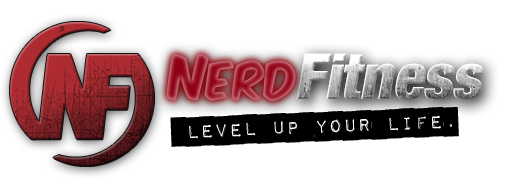-
Posts
16 -
Joined
-
Last visited
About rocksupreme
-
Rank
Rookie
- Birthday 06/24/1977
Retained
- Rookie
Character Details
-
Location
Honolulu
-
Padding is good. The best way to keep from landing on your back at all is to improve flexibility so you can get your feet under you faster. A super-deep squat and a nice bridge will be a huge help in making a pretty kip.
-

Trying to stay on task with a strained wrist
rocksupreme replied to McG's topic in Strength Training!
These tweaks happen. If it's only in the extended position, and it's improving, you're probably OK. Give it an extra day longer rest than you think you need too. If you have trouble with wrist pain in push-ups, etc. in general, you might fold a towel and place it under your palms to reduce the angle of extension and take some pressure off. It can also be a huge help to warm up and stretch the wrists a bit with some circles and such before putting weight on them. Hope it gets better quickly! -
This is a really good thread. Odyssey summed up both approaches nicely. Carb Nite is definitely more in the vein of Anabolic Solution or something where you do carb-ups fewer and further between to maximize time spent in ketosis. Backloading is a more sustainable program long-term IMO because it allows harder training and a beer or something else you like on training days. Coffee can help a lot on any program that calls for fasting or periodic carb depletion. Tea never gave me the same effect. You can cook with butter and cream to get extra fat if you need it too, but I also take a couple of teaspoons of coconut oil during the day as a supplement. I agree that $80 is a lot to pay for an ebook, though to be fair, Keifer is pretty up-front that you don't need it unless you really want to read the research and get a very detailed account of the ins and outs. I think he also includes training templates(?), which may or may not be worth something to you, depending on what you're into (his programming is essentially bodybuilding-style).
-
The other point is that gripping without thumbs creates a straighter line through the wrist to the ring and pinky fingers which is where your grip is strongest.
-
Back flips are actually a really easy skill and don't require a lot of jump. Of course, having a great jump makes them much easier, since you'll have more time to complete your rotation. The most important thing is generating momentum. The most difficult thing is getting over the fear of going backward. I think the Tapp Brothers have a couple of free tutorials on YouTube. I know they also have a product about getting the back flip, which is actually not bad at all. Their method is Parkour-based and relies less on equipment like you would use if learning in a gymnastics studio. In either event, a year should be more than sufficient. Especially if you're landing in a half lunge as that really only requires about 270-degree rotation...
-
Using a doorway or rope or something is not bad, but it teaches you to rely on your upper body too much, because you'll be pulling forward. If you have a little leg strength to spare, it works better to hold a light weight in front of you - like a small dumbbell or something. I used to use a ten pound plate in front of me with both hands. It only adds a bit of weight, but it really brings your balance further forwards without relying on your arms and shoulders to pull. For flexibility, working on down dog to loosen up the calves and ankles will probably help. I normally wouldn't recommend static stretching before exercise, but holding down dog for a minute prior to pistol practice will release any excess tension that's keeping you from getting low and tight.
-

Am I the right body type for parkour?
rocksupreme replied to JohnChester's topic in Strength Training!
Yeah man, just get out there and play. The great thing about Parkour is that it's completely adaptable - to the environment, and to your body. Each PKer will develop a unique style as a result of facing obstacles with their own body type, skills, and personality. You might be better suited to certain moves than others, but there's no reason you can't have a blast playing with PK. -
I love Al's videos. He's hilarious. I also like using a bench or something to build the initial strength. For the coordination/balance, there's a few things to contend with. Hip flexor strength to raise the leg is one factor - like Waldo wrote, leg raises can be good for that. It also really helps to lock out the knee if you can. That just makes the entire raised leg and core tighter and lighter. It also helps release the hamstrings via reciprocal inhibition (tight hamstrings may be another factor making it tough to raise the leg).
-
You'd be surprised how many people do. Definitely a good cue, provided the shoulders are in a good position.
-
I'd second that Q. When you're holding in the top position with elbows locked, your shoulders should be packed down, as if you wanted to pull your shoulders as far away from your ears as possible. That's the fairly easy part. The tough bit is keeping that shoulder pack as you lower down into the dip. If your shoulders are stiff, you'll also have a tendency to come out of pack in the bottom of the dip, so you may want to limit range of motion while focusing on on this for a while.
-
OK, here's a tutorial that will teach you how to activate your lats. That's where you should be initiating the movement for pull-ups, and it's also where a LOT of people are weak. http://www.goldmedalbodies.com/free/challenge/ Try greasing the groove with this for a week and see if it doesn't help you move out of the hang.
-
This video has some tips for your squat form. We like to use a support to pull forward while learning to sink the weight back... It's easier to see then read: We also posted some stretches for getting a deeper squat a friend's site earlier this week: http://jcdfitness.com/2012/05/get-your-butt-out-of-the-hole-how-to-improve-your-squat/ Those should help in addition to some of the good advice others have posted above.
-
We have a couple of tutorials on our site about building core strength for push-ups by developing the "hollow body" in the plank. http://www.goldmedalbodies.com/push-up-basics-master-part-1/ http://www.goldmedalbodies.com/push-up-basics-master-part-2-hollow-body-plank/ After working that with two hands, you'll probably see good carryover to the one-hand push-up as well. The major difference is that one-arm work will introduce some torque, so you'll need to build rotational stability as well. The good news is that you'll probably get plenty of that just by practicing the one-arm push-ups.
-
One thing that helped me recover after a bad sprain once was doing slow squats while holding onto a support to move the joint gently and rebuild range of motion without putting too much weight on it.
-
Well, there's definitely a point at which the just do more approach is going to come up against diminishing returns. The way forward is going to depend on why you're stuck. Are you overweight? Weak? How's your pull-up technique? If something is holding you back, you need to address that first. Greasing the groove can help train the CNS to be more efficient in the skill, but only if you're using good form every time. Increasing volume can make you stronger, provided you get enough recovery and adequate nutrition to build muscle. So what's holding you back?

